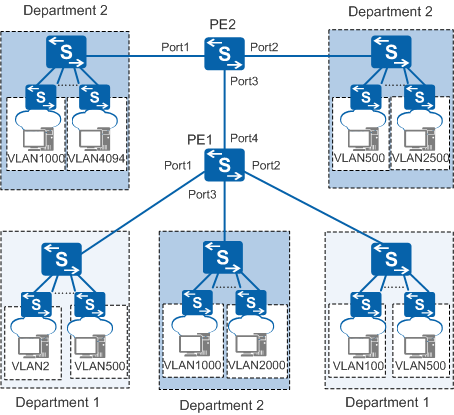Basic QinQ
Basic QinQ, also called QinQ tunneling, is performed based on interfaces. After basic QinQ is configured on an interface, packets received by the interface are tagged with the default VLAN ID of the interface. After being processed by basic QinQ on an interface, single-tagged packets change into double-tagged packets, and untagged packets change into single-tagged packets with the default VLAN tag of the interface.
Basic QinQ can be configured to expand VLAN space when multiple VLANs are required.
As shown in Figure 1, Department
1 has two offices (both connected to PE1), and Department 2 has three
offices (one connected to PE1 and two connected to PE2). Each department
is free to plan its own VLANs.
Table 1 provides the
outer VLAN plan for Department 1 and Department 2.
Basic QinQ is configured
on PE1 and PE2 in the following way to implement communication within
each department and isolate the two departments:
PE1 adds outer VLAN 10 to packets received on Port1 and Port2, and outer VLAN 20 to packets received on Port3.
PE2 adds outer VLAN 20 to packets received on Port1 and Port2.
Port4 on PE1 and Port3 on PE2 allow packets of VLAN 20 to pass.
